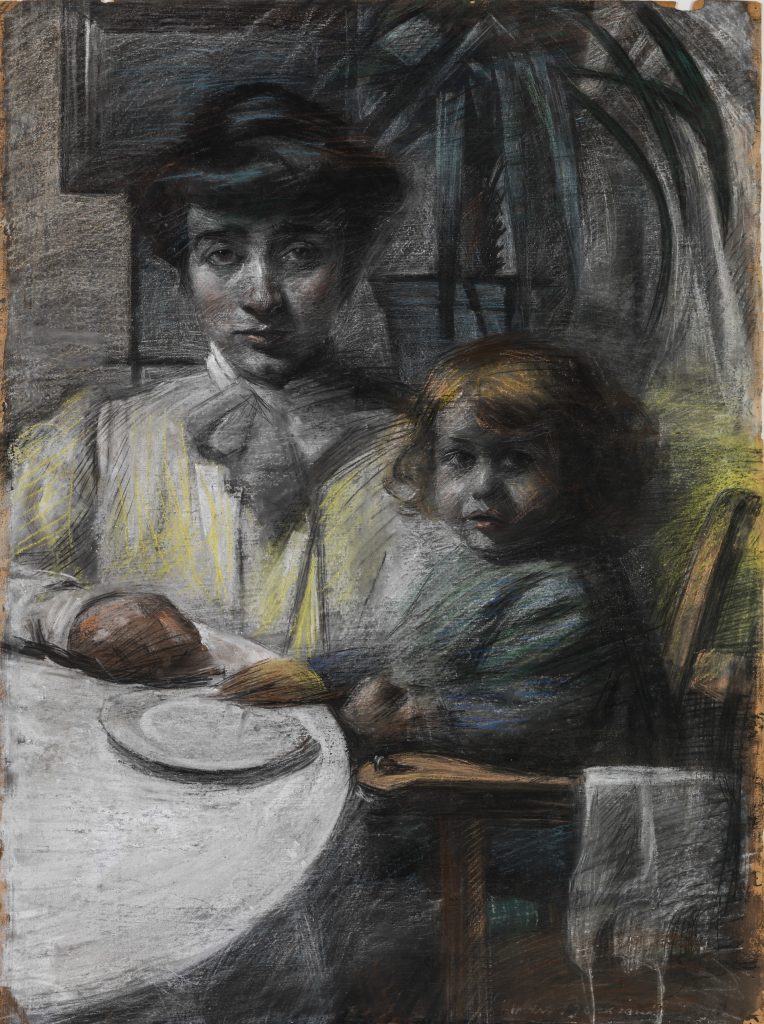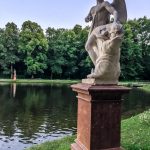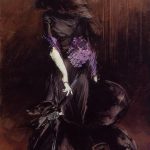
Umberto Boccioni was born on 19 October 1882 in Reggio Calabria. His father was a minor government employee, originally from the Romagna region in the north, and his job included frequent reassignments throughout Italy. The family soon relocated further north, and Umberto and his older sister Amelia grew up in Forlì (Emilia-Romagna), Genoa and finally Padua. At the age of 15, in 1897, Umberto and his father moved to Catania, Sicily, where he would finish school. Sometime after 1898, he moved to Rome and studied art at the Scuola Libera del Nudo of the Accademia di Belle Arti di Roma. He also studied under the Liberty style poster artist Giovanni Mataloni.
The little known about his years in Rome is found in the autobiography of his friend Gino Severini (1883–1966), who recalled their meeting in 1901 and mutual interest in Nietzsche, rebellion, life experiences and socialism. Boccioni’s writings at this time already express the combination of outrage and irony that would become a lifelong characteristic. His critical and rebellious nature, and overall intellectual ability, would contribute substantially to the development of the Futurism movement. After building a foundation of skills, having studied the classics through Impressionism, both he and Severini became students of Giacomo Balla (1871–1958), a painter focusing on the modern Divisionist technique, painting with divided rather than mixed color and breaking the painted surface into a field of stippled dots and stripes. Severini wrote, “It was a great stroke of luck for us to meet such a man, whose direction was decisive of all our careers.” Source: Wikipedia.



